Delaware is home to over 400 different bird species. Only a few of those species spend their winters in Delaware’s chilly coastal towns and snowy yards. Delaware’s winter occurs from December to February, and freezing temperatures are not unusual.
This article focuses on the 14 birds found in Delaware year-round, opting to stay in the state for the winter rather than migrate.
1. Eastern Blue Jays
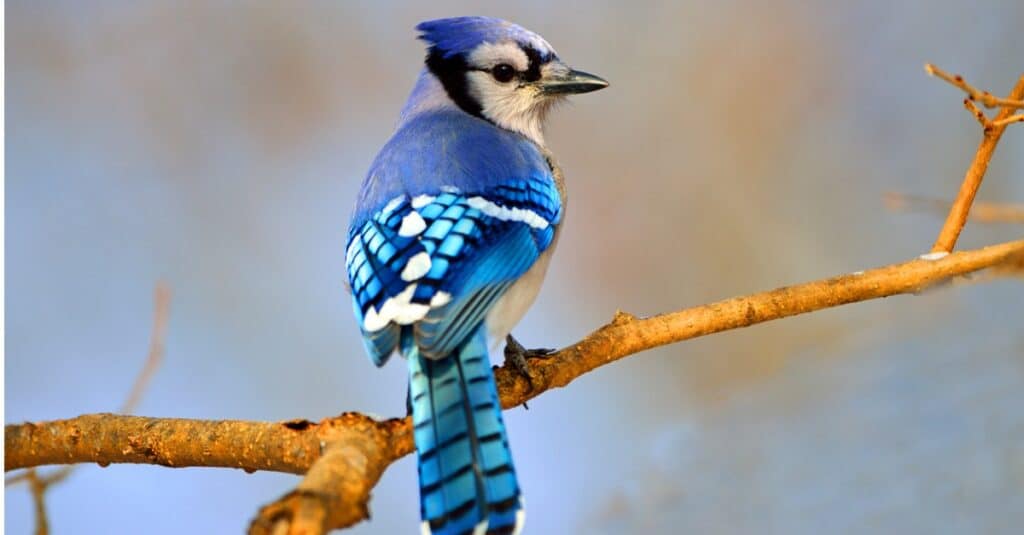
Most mature blue jays prefer to stay in the same territory and don’t migrate.
©iStock.com/BrianEKushner
Eastern blue jays (Cyanocitta cristata) are small birds with vibrant blue plumage. There are four subspecies of blue jays in the United States, and eastern blue jays are common residents in Delaware. They live in Delaware year-round, often stopping in open fields and backyards. These songbirds make alarm-like call and can imitate other birds.
2. Great Horned Owl

Great horned owls have no issue seeking out both large and small prey animals.
©agustavop/iStock via Getty Images
The great horned owl (Bubo virginianus) is a nocturnal bird and one of the largest owls in Delaware. Great horned owls are large at 17 to 25 inches long. They feature tufts of feathers on their heads that resemble horns. These owls are skilled predators that can catch prey in snowy conditions and create quite a spectacle doing so.
3. Tufted Titmouse
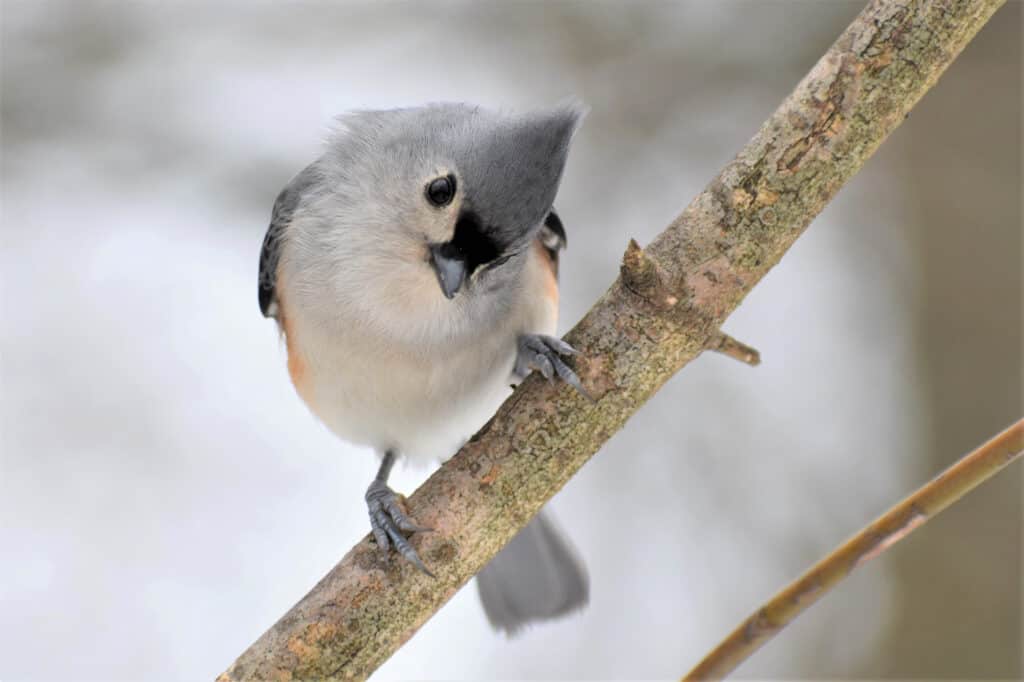
Tufted titmouse birds are curious birds that frequent bird feeders, especially in the winter.
©Lester Graham/Shutterstock.com
The tufted titmouse (Baeolophus bicolor) is a songbird and year-round resident of Delaware. You can find them in forests and orchards with tall trees, but they flock in city parks too. These birds have grey and white plumage with rust-colored undersides and a tuft on their crown.
4. Pileated Woodpecker
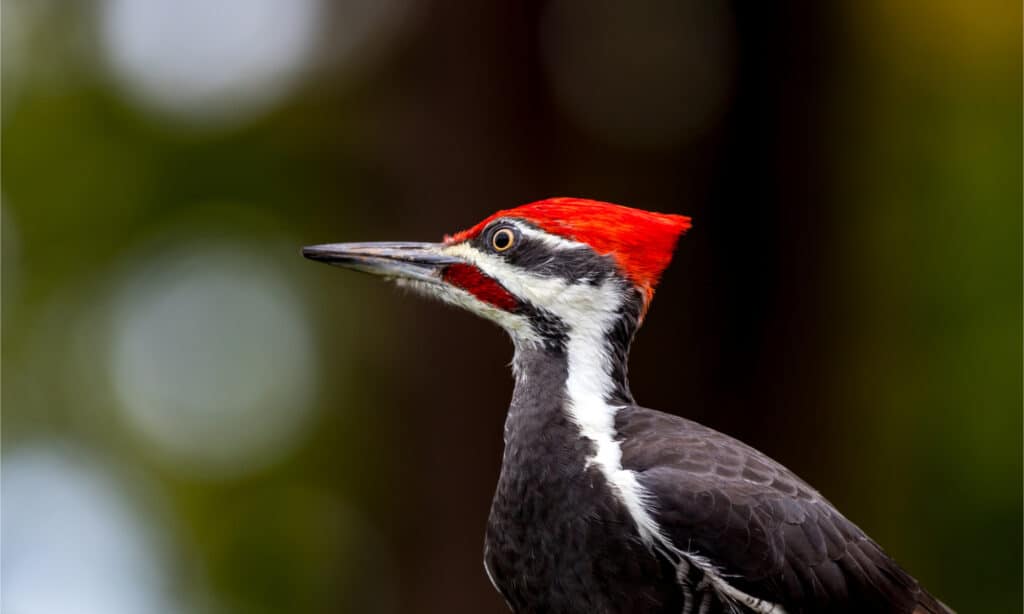
The pileated
woodpecker
is a non-migratory bird, so they remain in Delaware throughout every season.
©rhfletcher/Shutterstock.com
Pileated woodpeckers (Dryocopus paleatus) are the largest year-round woodpeckers in Delaware. In addition to their size, these birds stand out with a vibrant red crest on their head, which looks striking against their black and white plumage.
5. Northern Cardinals

Only the male northern cardinals have distinctive red plumage. The females are a brown to olive color.
©peter weiler/Shutterstock.com
It’s hard to miss the vibrant red plumage of northern cardinals (Cardinalis cardinalis) in Delaware. Northern cardinals are small non-migratory birds frequently seen in Delaware and other parts of the eastern United States. Though they are known for being bright red, only males possess this vibrant shade, while females are dull. They produce a series of relatively loud chirps along with several other melodic calls.
6. White-Breasted Nuthatch

White-breasted nuthatch birds enjoy a diet high in seeds, with 60% of their diet being vegetarian.
©lauraag/iStock via Getty Images
The white-breasted nuthatch (sitta carolinensis) is a medium-sized bird with an average length of 5.5 to 6.1 inches. They have grey and white plumage with long beaks. Because they love to eat seeds, these birds reside in Delaware’s mature forests through all seasons.
7. Anna’s Hummingbird
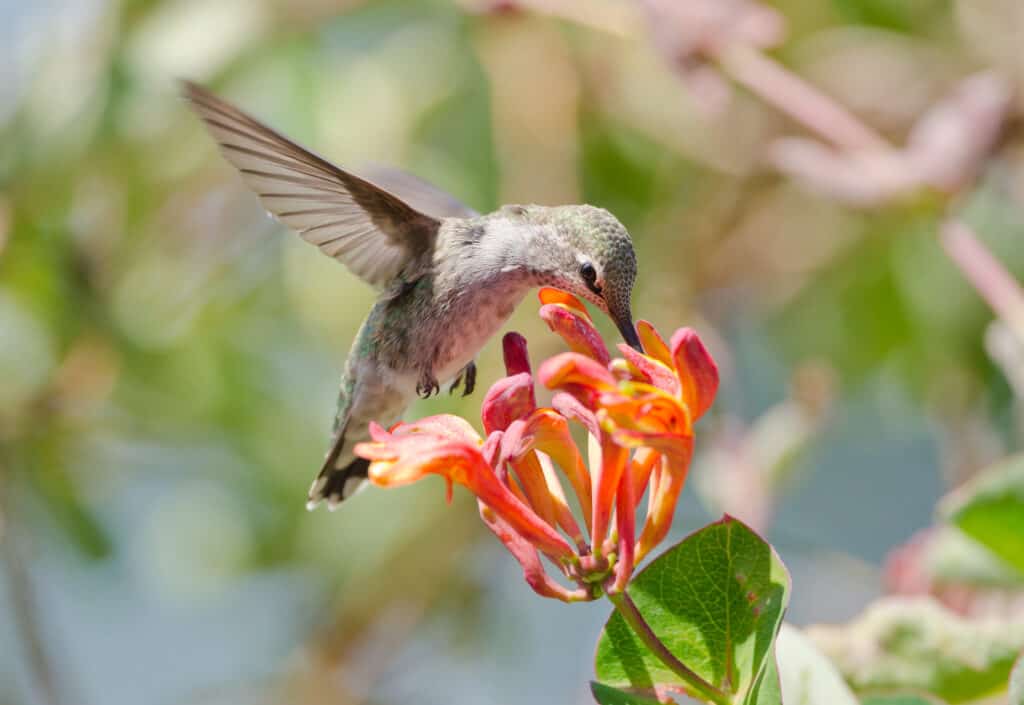
Anna’s hummingbirds enter a state of semi-hibernation known as torpor when temperatures drop.
©Birdiegal/Shutterstock.com
The beautiful Anna’s hummingbird (Calypte anna) has one of the northernmost year-round ranges of all hummingbirds. They can handle Delawares’ crisp winters as long as there is plenty of available food and shelter. Male Anna’s hummingbirds stand out with jade green and pink plumage, while females are more of a brown to olive color.
8. Black-Capped Chickadee
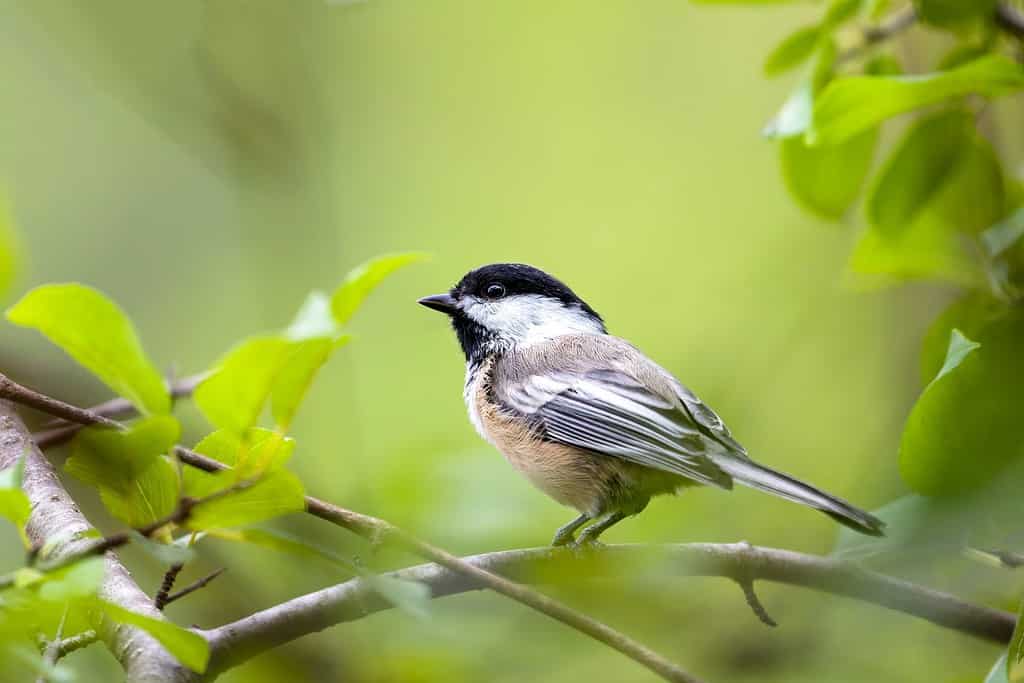
These birds get their name from the black cap on the crown of their heads.
©Manu M Nair/Shutterstock.com
Black-capped chickadees (Peocile atricapillus) are small, non-migratory birds. They can tolerate cold winters, which allow them to stay in Delaware year-round. In fact, black-capped chickadees lower their body temperature at night to survive cold winters. Due to their reduced body temperatures, they enter a state of regulated hypothermia to conserve energy.
9. Northern Mockingbird
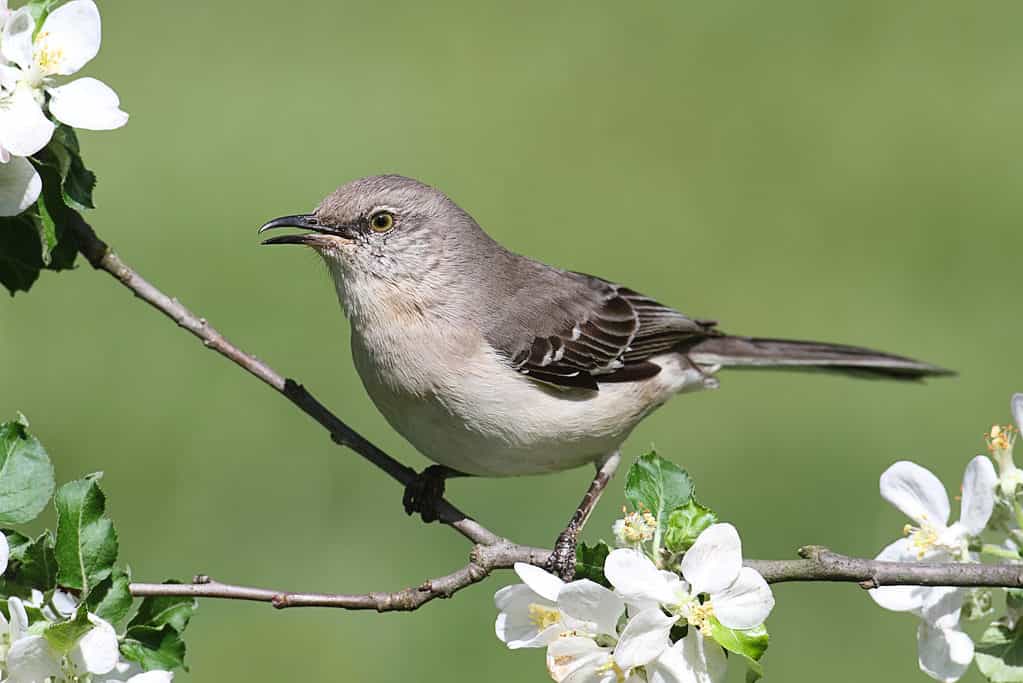
Populations of northern mockingbirds may decline during harsh winters, but they can tolerate mild ones.
©Steve Byland/Shutterstock.com
Northern mockingbirds (Mimus polyglottos) are common in North America and permanent residents of Delaware. These medium-sized birds have grey plumage and great mimicking abilities. Northern mockingbirds generally stay put, although they may migrate if the temperature becomes too cold.
10. Hairy Woodpecker
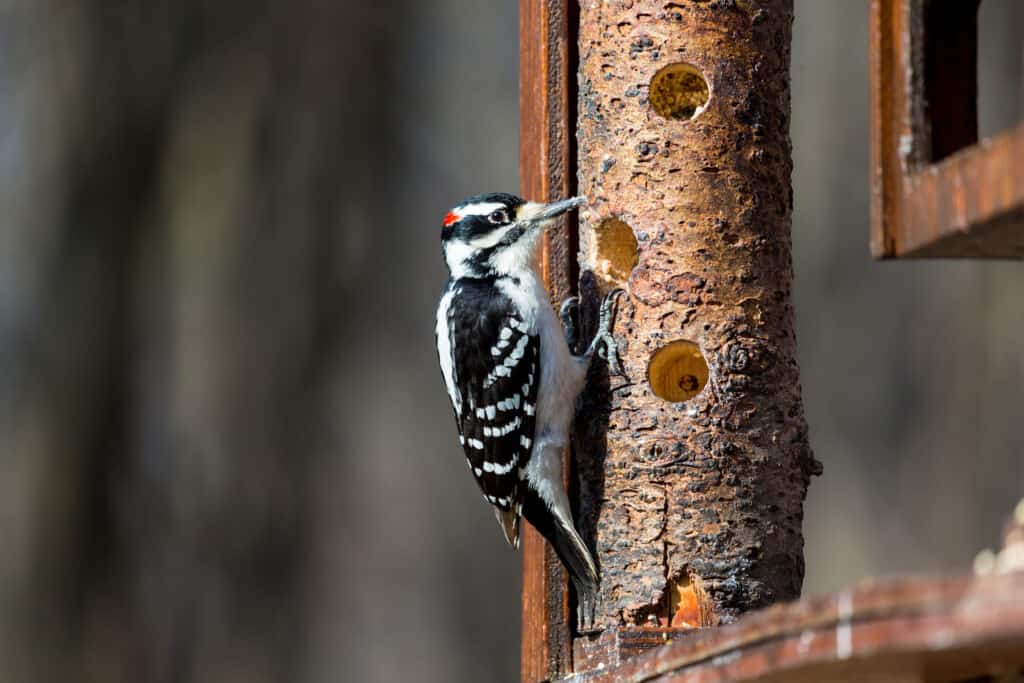
The hairy woodpecker gets its name from the thread-like feathers along their backs that resembles fur.
©Glass and Nature/Shutterstock.com
Hairy woodpeckers (Leuconotopicus villosus) are widespread birds in North America, with large populations in Delaware. They live year-round in Delaware’s forests, urban parks, backyards, and woodlands. Hairy woodpeckers have white and black plumage, with males having a reddish orange marking on their heads.
11. European Starling
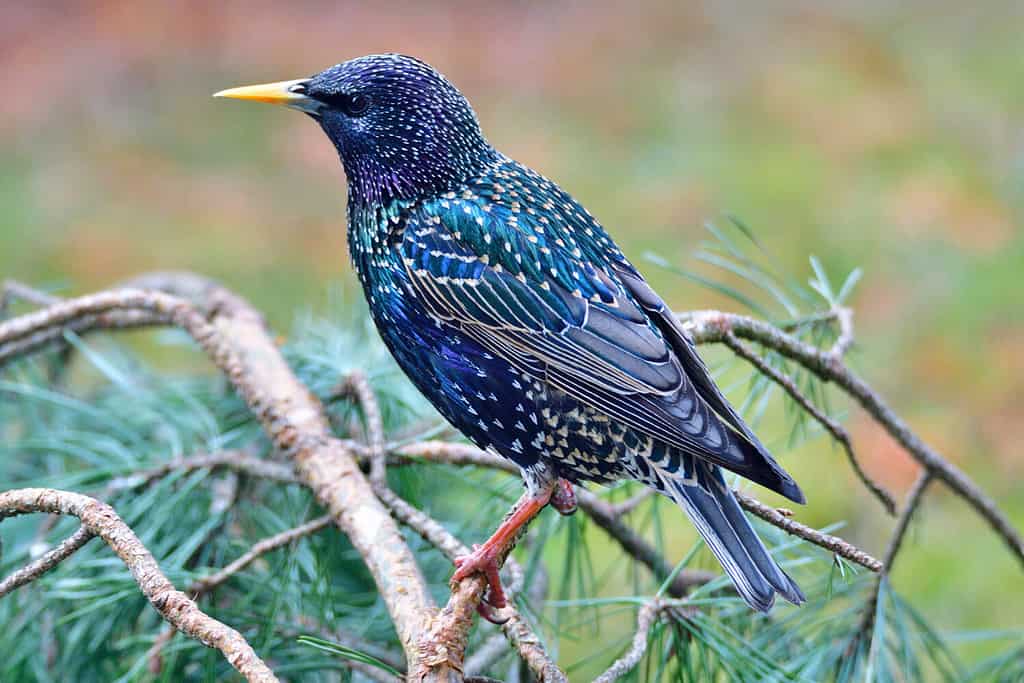
European starlings lose their glossy iridescent plumage in the wintertime.
©Karin Jaehne/Shutterstock.com
The European starling (Sturnus vulgaris) is a medium-sized passerine bird with striking plumage. These birds stand at 7 to 9 inches tall and have black, iridescent plumage with yellow beaks.
In winter, their plumage changes to a drab brownish-black coloration and loses its shininess. Additionally, their beaks turn brownish-black, and they develop white spots along their heads and stomachs. European starlings regain their striking iridescent plumage once the weather warms.
12. Red-Bellied Woodpecker

The red-bellied woodpeckers are non-migratory birds that commonly enter backyards during winter.
©rck_953/Shutterstock.com
Red-bellied woodpeckers (Melanerpes carolinus) are striking birds found year-round in Delaware. They are often in backyards and enjoy hanging around topped-up bird feeders. As their name suggests, red-bellied woodpeckers have red bellies and red crowns on their heads. Their wings are black with white spots, and they have orange facial markings.
13. American Goldfinch
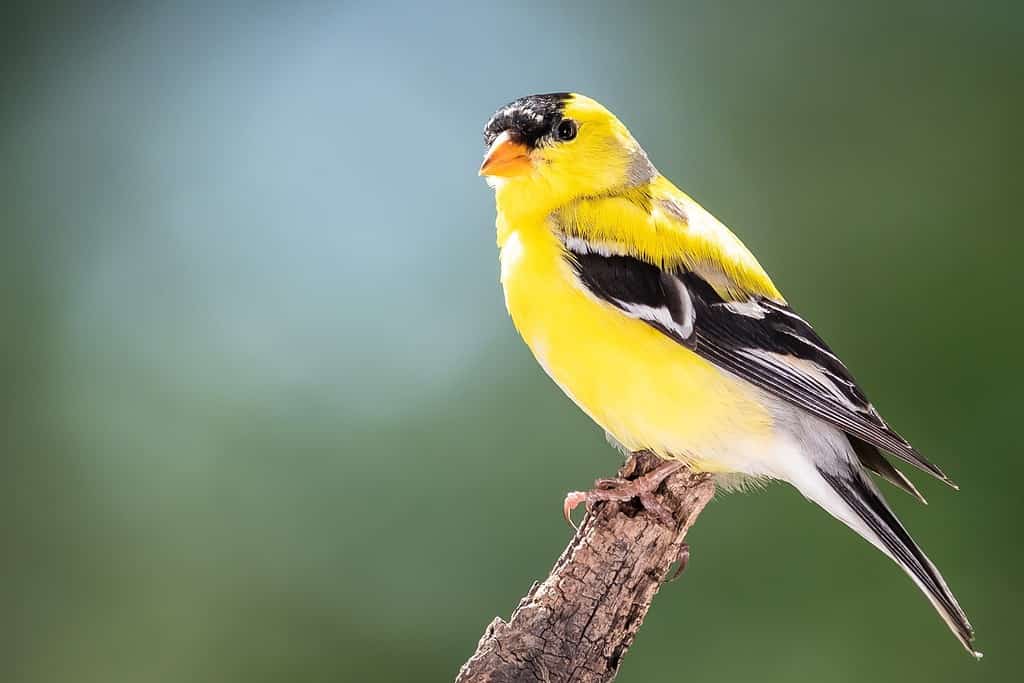
The plumage of an American goldfinch varies depending on the season.
©rck_953/Shutterstock.com
The American goldfinch (Spinus tristis) is a permanent resident of Delaware. Both sexes of these small birds change colors during summer and winter. In summer, American goldfinches have striking yellow and black plumage. Alternately, in winter, feathers change to a dull brown color with a slight yellow tint to their face and black wings.
14. Red-Winged Blackbird
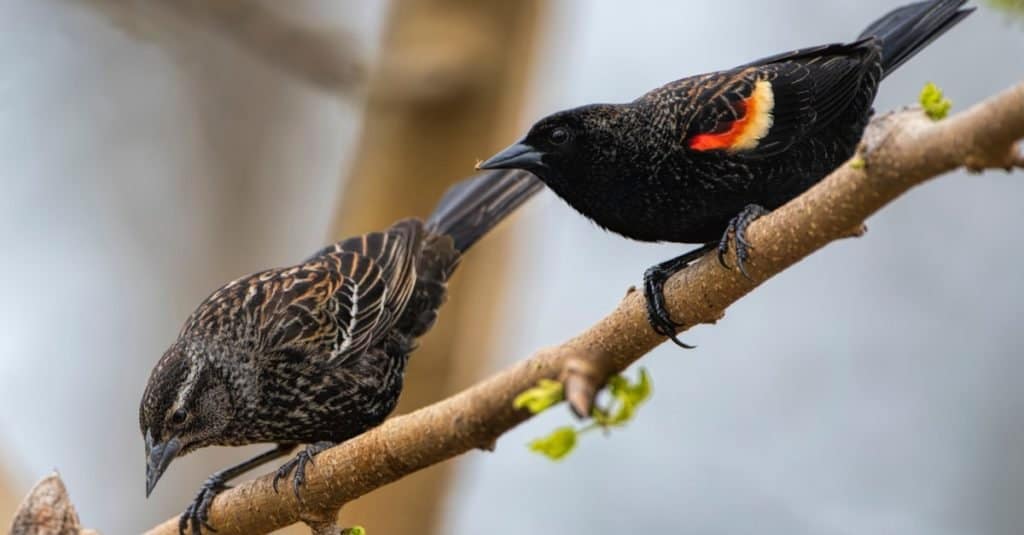
Male and female red-winged blackbirds are easily distinguishable. Males feature bright wing markings.
©Bonnie Taylor Barry/Shutterstock.com
Red-winged blackbirds (Agelaius phoeniceus) are small, popular birds observed year-round in Delaware. They are common in backyards and travel in large flocks. Female red-winged blackbirds are not as striking as the males. Male red-winged blackbirds have black plumage with reddish-orange patches (epaulets) on each shoulder. However, their appearance changes slightly in winter when they develop brown feathers.
Summary Of the 14 Birds That Spend Their Winters in Delaware
| Number | Birds |
|---|---|
| 1 | Eastern Blue Jay’s |
| 2 | Great Horned Owl |
| 3 | Tufted Titmouse |
| 4 | Pileated Woodpecker |
| 5 | Northern Cardinals |
| 6 | White-Breasted Nuthatch |
| 7 | Anna’s Hummingbird |
| 8 | Black-Capped Chickadee |
| 9 | Northern Mockingbird |
| 10 | Hairy Woodpecker |
| 11 | European Starling |
| 12 | Red-Bellied Woodpecker |
| 13 | American Goldfinch |
| 14 | Red-Winged Blackbird |
The photo featured at the top of this post is © lauraag/iStock via Getty Images
Thank you for reading! Have some feedback for us? Contact the AZ Animals editorial team.






